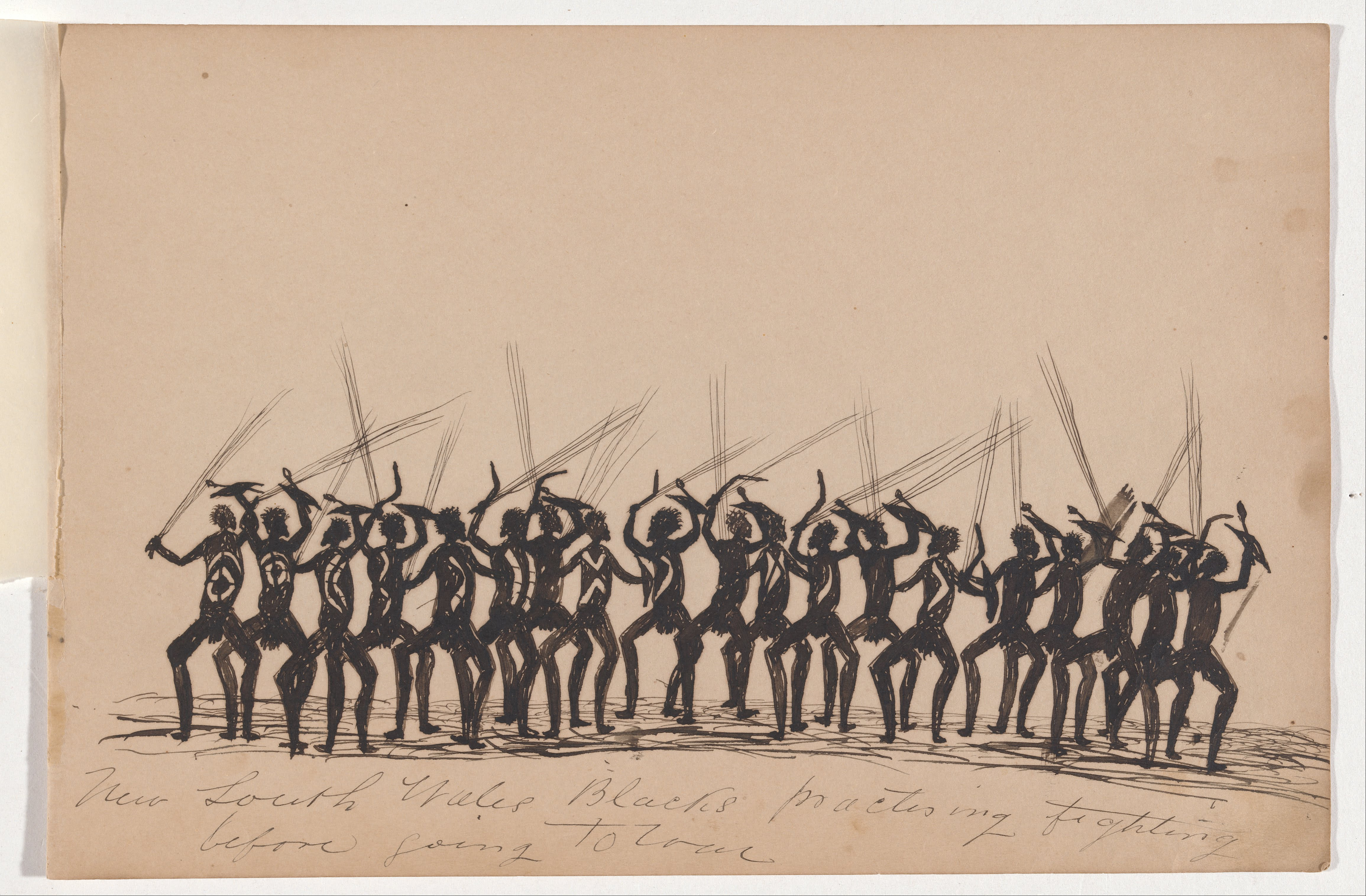The main weapon that the Europeans brought with them had already decimated the populations of the much of the world in times past. In fact, these Europeans were the descendants of those who had survived thousands of years of the onslaught of this weapon, called disease.
 |
| New South Wales Blacks practising fighting before going to war-Sketchbook of Aboriginal activities, c, 1890 |
It was the early rise of agriculture in Eurasian societies which conferred a technologic and immunologic advantage to the Europeans when they entered the lands occupied by societies who still lived a mostly hunter-gatherer way of life. The European people had descended from people who had developed farming and who had lived in close proximity with animals; they also tended to live in densely populated communities. Such conditions favoured the transmission of disease, including diseases which had jumped from animals to humans, like Smallpox, measles, and influenza. Not to mention the Black Death which is estimated to have killed 30–60% of Europe's total population.
 |
| Miniature out of the Toggenburg Bible (small pox), c. 1411 |
Many of the descendants of Indigenous people must wish that the Europeans had stayed at home and that their societies had been allowed to continue on in its traditional way (and who could blame them). However, that would just be postponing the inevitable. Today, such isolated peoples still exist and they are often referred to as uncontactable tribes, as Western people must stay away from them due to their lack of immunity to common diseases and pathogens.
One such uncontactable tribe of people are the Sentinelese of the Andaman Islands of India, whose population is estimated at 40 to 500 individuals. This group still live a hunter-gatherer lifestyle with no evidence of agriculture or fire making. In 2004, the Sentinelese survived the Tsunami in the region and then rejected the help offered by rescue teams. In 2007, two Indian fishermen were killed by the Sentinelese, when they went too close to their islands while fishing. However, the Sentinelese and other such isolated people, need to stay separate, as they have no immunity to even common diseases such as the flu and measles, and their very survival is precarious.
 |
| Group of Andaman Men and Women, c. 1903 |
Guns, germs, and steel: the fates of human societies, By Jared Diamond.
